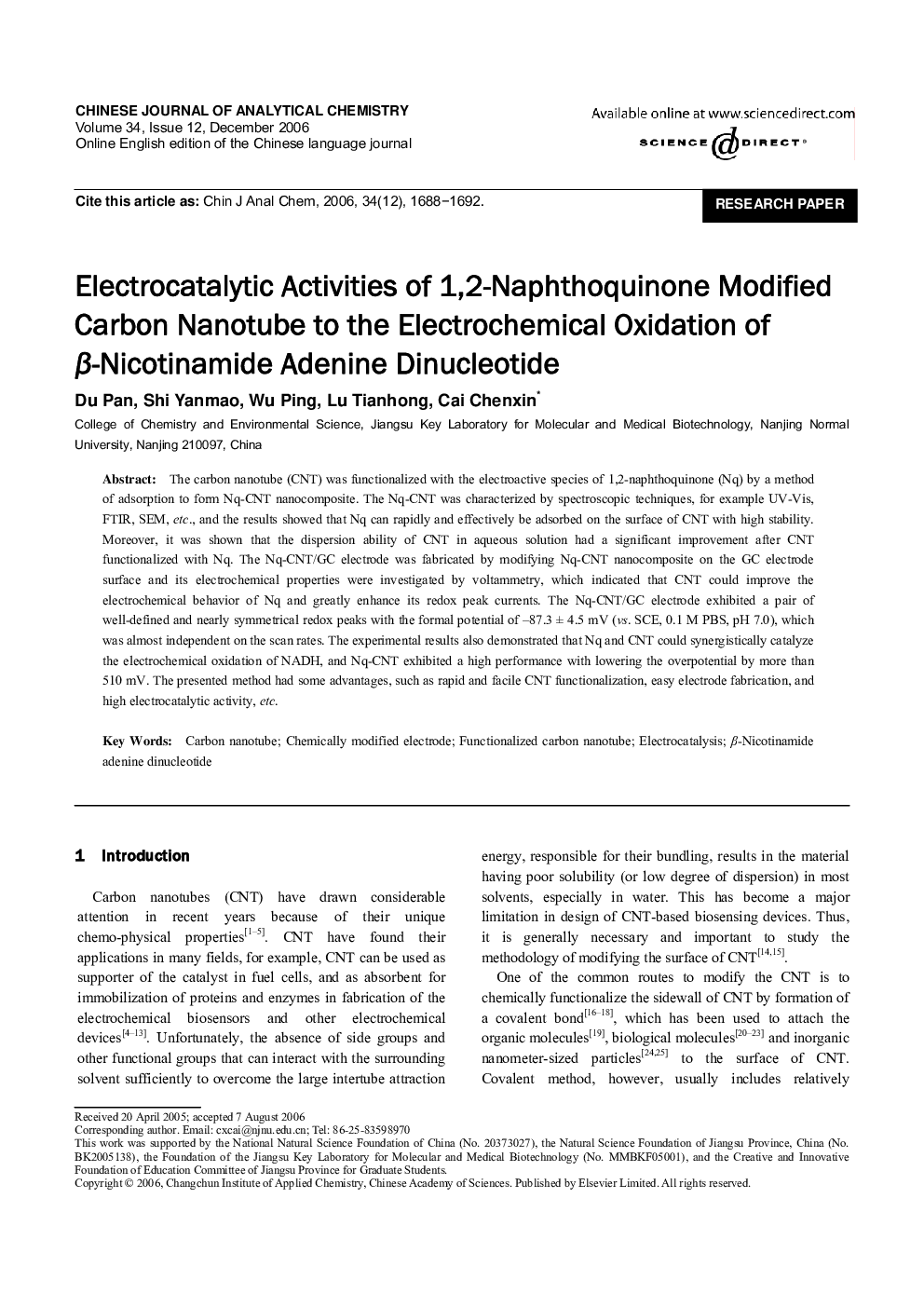| Article ID | Journal | Published Year | Pages | File Type |
|---|---|---|---|---|
| 1182340 | Chinese Journal of Analytical Chemistry | 2006 | 6 Pages |
The carbon nanotube (CNT) was functionalized with the electroactive species of 1,2-naphthoquinone (Nq) by a method of adsorption to form Nq-CNT nanocomposite. The Nq-CNT was characterized by spectroscopic techniques, for example UV-Vis, FTIR, SEM, etc., and the results showed that Nq can rapidly and effectively be adsorbed on the surface of CNT with high stability. Moreover, it was shown that the dispersion ability of CNT in aqueous solution had a significant improvement after CNT functionalized with Nq. The Nq-CNT/GC electrode was fabricated by modifying Nq-CNT nanocomposite on the GC electrode surface and its electrochemical properties were investigated by voltammetry, which indicated that CNT could improve the electrochemical behavior of Nq and greatly enhance its redox peak currents. The Nq-CNT/GC electrode exhibited a pair of well-defined and nearly symmetrical redox peaks with the formal potential of –87.3 ± 4.5 mV (vs. SCE, 0.1 M PBS, pH 7.0), which was almost independent on the scan rates. The experimental results also demonstrated that Nq and CNT could synergistically catalyze the electrochemical oxidation of NADH, and Nq-CNT exhibited a high performance with lowering the overpotential by more than 510 mV. The presented method had some advantages, such as rapid and facile CNT functionalization, easy electrode fabrication, and high electrocatalytic activity, etc.
